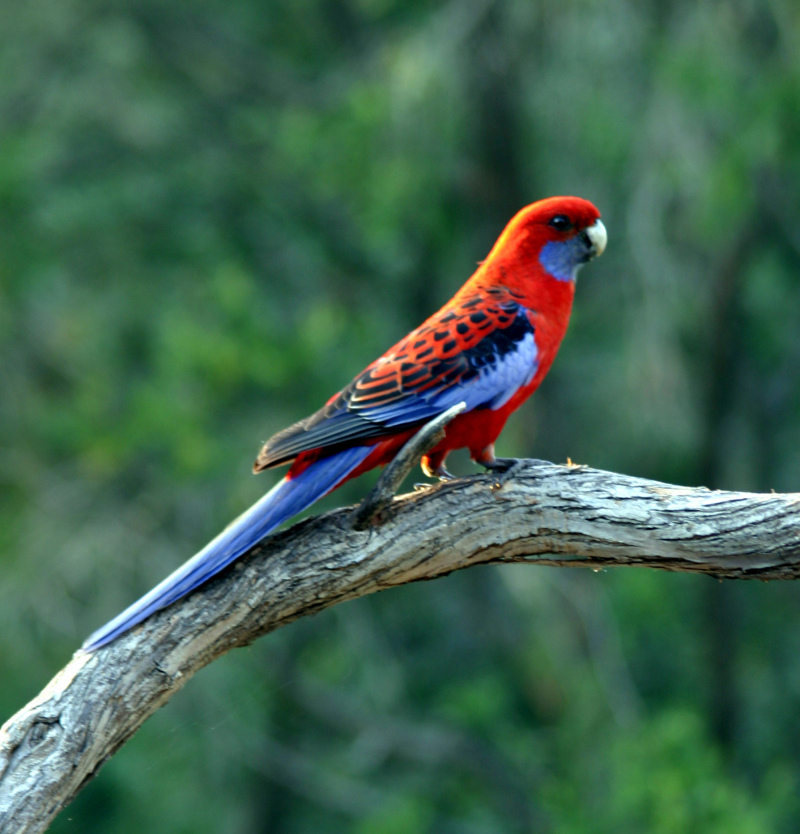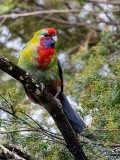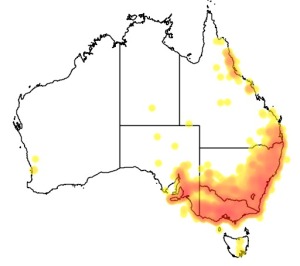Colours
Distinguishing features
It is a medium-sized Australian parrot with a relatively long tail. There are five subspecies, three of which are actually crimson. The red is replaced by yellow or a mixture of red, orange and yellow in the other subspecies. All subspecies have blue cheeks and black-scalloped blue-margined wings and a predominantly blue tail. The bill is pale grey and the iris dark brown.
Adults and juveniles generally show strikingly different colouration in south-eastern populations, with predominantly greenish-olive body plumage on the juvenile, most persistent on the nape and breast. Juveniles are said to 'ripen' as they get older and turn from green to red.
There is very little sexual dimorphism in Crimson Rosellas. The most noticeable difference between genders is that males are up to 15% larger, and have a relatively larger and wider beak. (Wikipedia)
Size
- Up to 35 cm (Length of specimen)
Wingspan
- Up to 53 cm
Synonyms
Distribution
Distribution and habitat preferences
It is common in coastal and mountain forests at all altitudes. It primarily lives in forests and woodlands, preferring older and wetter forests. They can be found in tropical, subtropical, and temperate rainforests, both wet and dry sclerophyll forests, riparian forests, and woodlands, all the way from sea-level up to the tree-line. They will also live in human-affected areas such as farmlands, pastures, fire-breaks, parks, reserves, gardens, and golf-courses. They are rarely found in treeless areas. At night, they roost on high tree branches. (Wikipedia)
Behaviour
lmost all Rosellas are sedentary, although occasional populations are considered nomadic; no Rosellas are migratory. Outside of the breeding season, Crimson Rosellas tend to congregate in pairs or small groups and feeding parties. The largest groups are usually composed of juveniles, who will gather in flocks of up to 20 individuals. When they forage, they are conspicuous and chatter noisily. Rosellas are monogamous, and during the breeding season, adult birds will not congregate in groups and will only forage with their mate. (Wikipedia)
Diet
Crimson Rosella forage in trees, bushes, and on the ground for the fruit, seeds, nectar, berries, and nuts of a wide variety of plants, including members of the Myrtaceae, Asteraceae, and Rosaceae families. Despite feeding on fruits and seeds, Rosellas are not useful to the plants as seed-spreaders, because they crush and destroy the seeds in the process of eating them.
Crimson Rosella will also eat many insects and their larvae, including termites, aphids, beetles, weevils, caterpillars, moths, and water boatmen. (Wikipedia)






